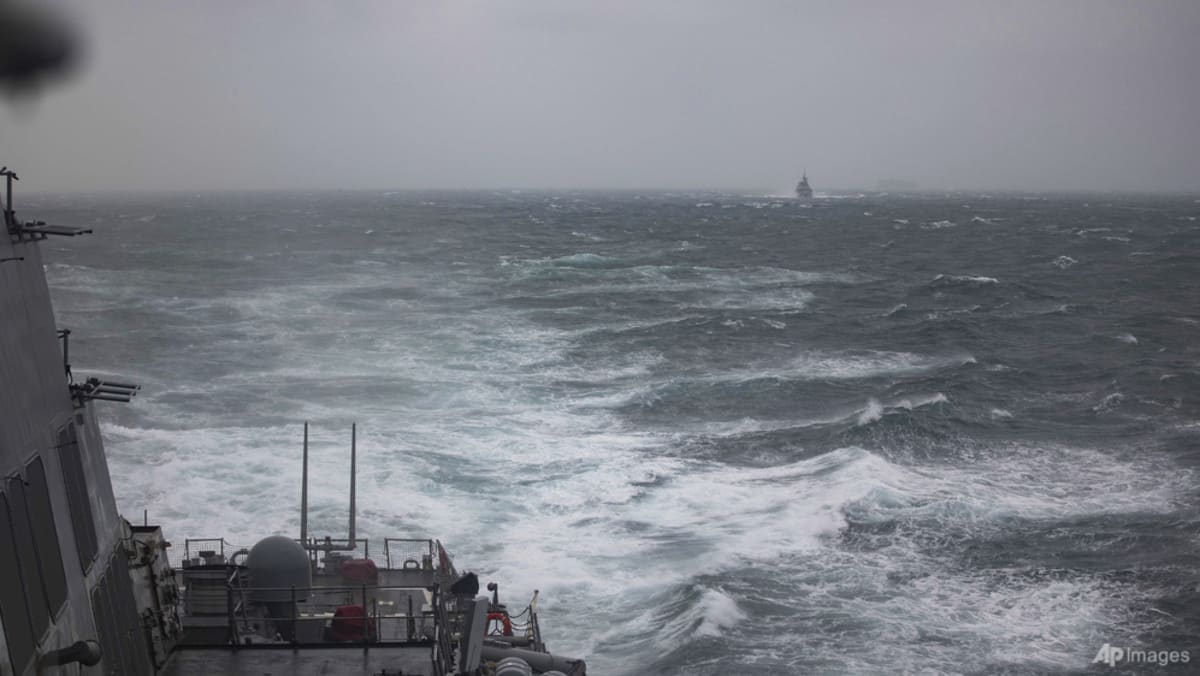Asia
First US Navy ships sail through Taiwan Strait since Trump inauguration

Rising Tensions in the Taiwan Strait: A Sensitive Naval Passage
The Taiwan Strait, a narrow and strategically vital waterway separating Taiwan from mainland China, has once again become a focal point of escalating tensions between the United States and China. In early February, two U.S. Navy ships, the destroyer Lyndon B. Johnson and the survey ship Bowditch, transited the disputed strait, marking the first such operation since President Donald Trump took office in January. This move has drawn sharp criticism from China, which views the strait as part of its territorial waters and has accused the U.S. of raising regional security risks.
A Routine But Sensitive Operation
While the U.S. Navy conducts such transits approximately once a month, often accompanied by ships from allied nations, this particular operation has sparked heightened concern due to its timing and geopolitical context. The Taiwan Strait is not merely a shipping route but a symbol of the complex web of territorial disputes and political sensitivities in the region. China, which claims Taiwan as its own territory, has long been wary of U.S. involvement in the strait, viewing it as an interference in its internal affairs. Beijing has consistently maintained that the strait is part of Chinese waters, a claim that is not universally recognized by the international community.
China’s Swift and Stern Response
China’s military responded swiftly to the U.S. naval operation, dispatching forces to monitor the ships as they passed through the strait between February 10 and 12. The Eastern Theatre Command of the People’s Liberation Army issued a statement condemning the U.S. action, stating that it "sends the wrong signals and increases security risks." This stern reaction reflects Beijing’s growing assertiveness in defending its territorial claims and its increasing intolerance of what it perceives as foreign provocations. The Chinese military’s daily presence in the strait, as part of its routine operations, is seen by Taiwan as part of a broader campaign of pressure aimed at asserting Beijing’s dominance over the region.
The U.S. Navy’s Silence and Diplomatic Implications
The U.S. Navy has not yet commented on the operation, but such transits are typically framed as routine exercises aimed at ensuring freedom of navigation in international waters. However, the lack of immediate response from U.S. officials has not diminished the diplomatic fallout. The incident has highlighted the delicate balance of power in the region, with the U.S. seeking to maintain its influence while China assertively defends its territorial interests. The stakes are high, as any miscalculation could escalate into a broader conflict, with implications for regional stability and global security.
Taiwan’s Position in the Dispute
At the heart of this dispute is Taiwan, a democracy of 23 million people that has governed itself since 1949, when the Nationalist government retreated to the island following the Chinese Civil War. Taiwan’s president, Lai Ching-te, has rejected Beijing’s sovereignty claims, asserting that only the Taiwanese people can determine their future. This stance places Taiwan at the center of a growing ideological and geopolitical struggle between the U.S. and China, with each side seeking to influence the island’s trajectory. Taiwan views China’s military presence in the strait as part of a larger effort to isolate it internationally and undermine its democratic institutions.
A Broader Context of Regional Rivalries
The U.S. naval transit through the Taiwan Strait must be viewed within the context of broader regional dynamics. The operation comes amid heightened tensions between Washington and Beijing, driven by trade disputes, technological competition, and competing visions for the Indo-Pacific. The U.S. has long maintained a policy of "strategic ambiguity" toward Taiwan, providing military support to the island while officially recognizing Beijing’s "One China" policy. However, recent moves by the U.S. to strengthen ties with Taiwan, including arms sales and diplomatic exchanges, have fueled Chinese suspicions of American intentions.
As the situation in the Taiwan Strait continues to evolve, the region remains a flashpoint for potential conflict. The balance of power, diplomatic maneuvering, and the unresolved status of Taiwan all contribute to a volatile environment. The U.S. and China must navigate this sensitive landscape with care, as missteps could have far-reaching consequences for regional stability and global peace.